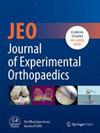Younger age, medial meniscectomy and remnant-sacrificing reconstruction techniques affect residual pivot shift after anterior cruciate ligament reconstruction using hamstring tendons
Abstract
Purpose
To investigate the factors affecting residual pivot shift after anterior cruciate ligament (ACL) reconstruction.
Methods
This multicentre prospective cohort study included patients who underwent primary ACL reconstruction using an autologous hamstring tendon graft with or without the ACL remnant-preserving technique. Multivariable logistic regression analysis was conducted to identify the factors that influenced residual pivot shift 1 year after ACL reconstruction. Age, sex, body mass index, interval between injury and surgery, preoperative pivot-shift grade, side-to-side differences in anterior knee laxity, hyperextension, lateral and medial meniscus treatments, and ACL reconstruction procedure (remnant-sacrificing single-bundle reconstruction, remnant-sacrificing double-bundle reconstruction or remnant-preserving single-bundle reconstruction) were selected as independent variables in the multivariable model. Patients who underwent additional lateral extra-articular tenodesis or anterolateral ligament reconstruction were excluded.
Results
A total of 760 patients, including 394 males and 366 females (average age at surgery, 29.1 years; age range, 14–67 years), were enroled in this study. The postoperative side-to-side difference in anterior knee laxity was 0.8 ± 2.3 mm, and pathological positive results in the pivot-shift test 1 year after ACL reconstruction were observed in 95 patients (12.5%). Factors that significantly affected postoperative positive pivot-shift test results were younger age (odds ratio [OR] 1.71; p = 0.033), medial meniscectomy (OR, 3.48; p < 0.001), remnant-sacrificing single-bundle reconstruction (OR, 3.54; p < 0.001) and remnant-sacrificing double-bundle reconstruction (OR, 2.18; p = 0.034).
Conclusions
Younger age, medial meniscectomy and remnant-sacrificing ACL reconstruction techniques were associated with residual pivot shift 1 year after ACL reconstruction. Identifying risk factors for postoperative residual pivot-shift is important for optimizing treatment decisions.
Level of Evidence
Level II.

 求助内容:
求助内容: 应助结果提醒方式:
应助结果提醒方式:


